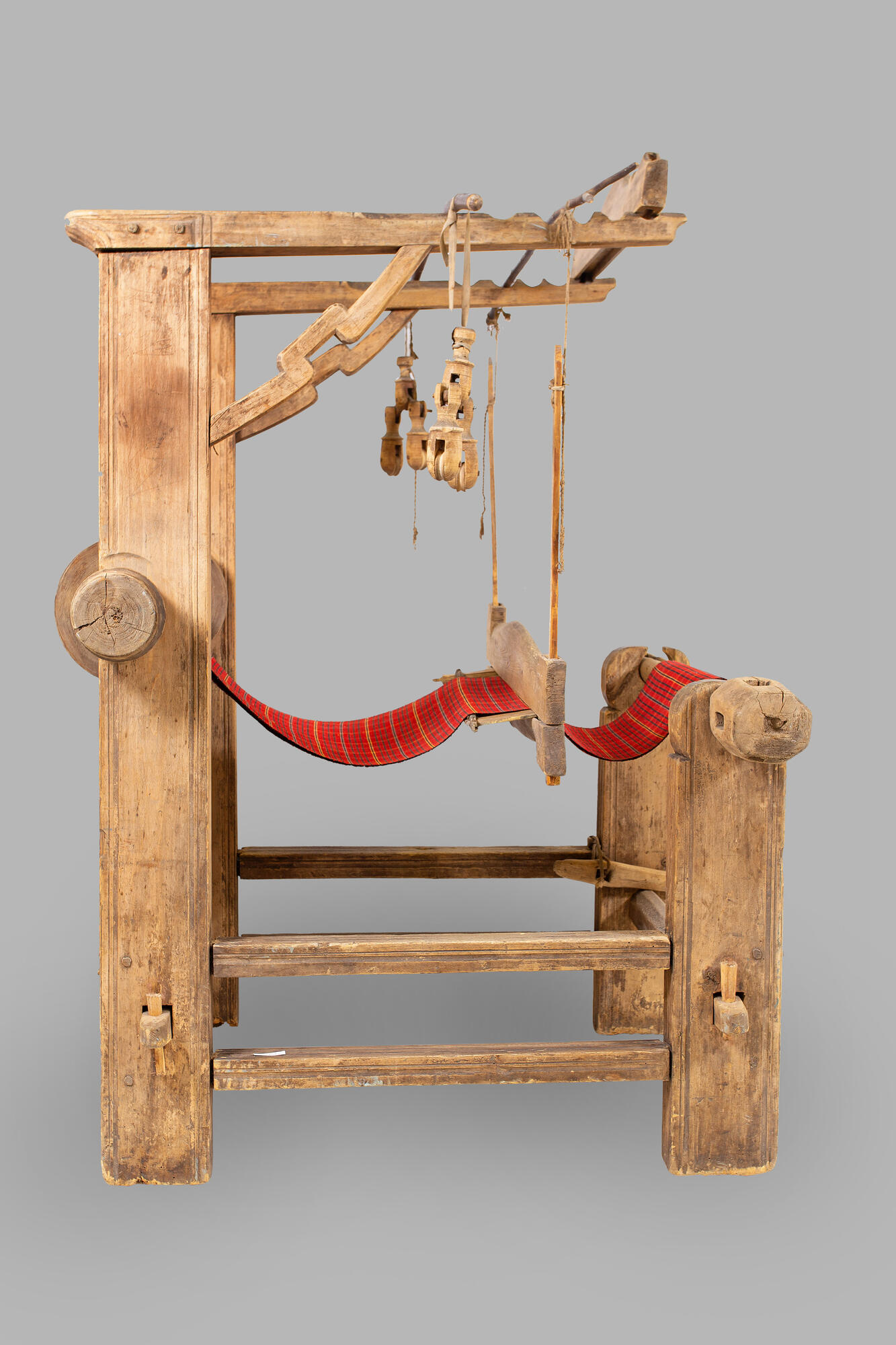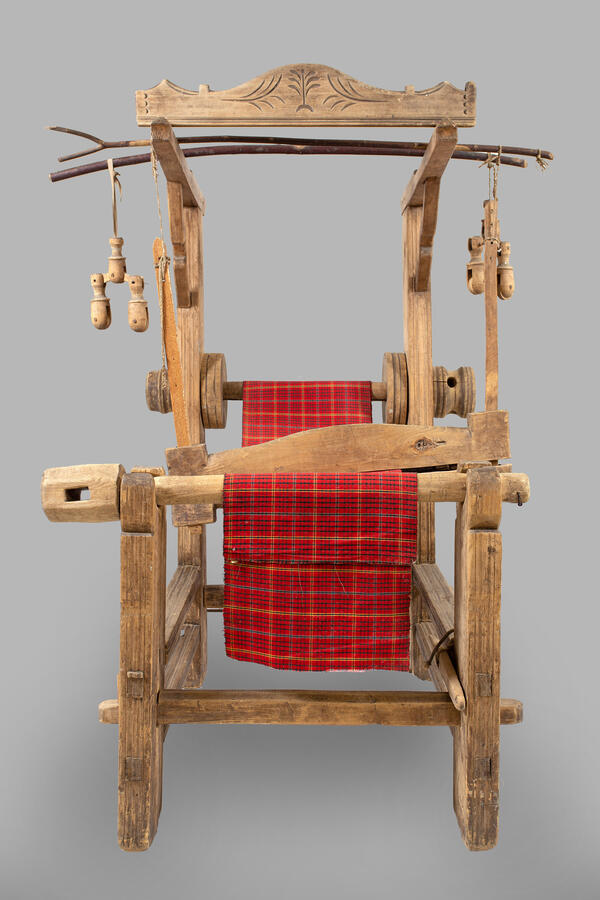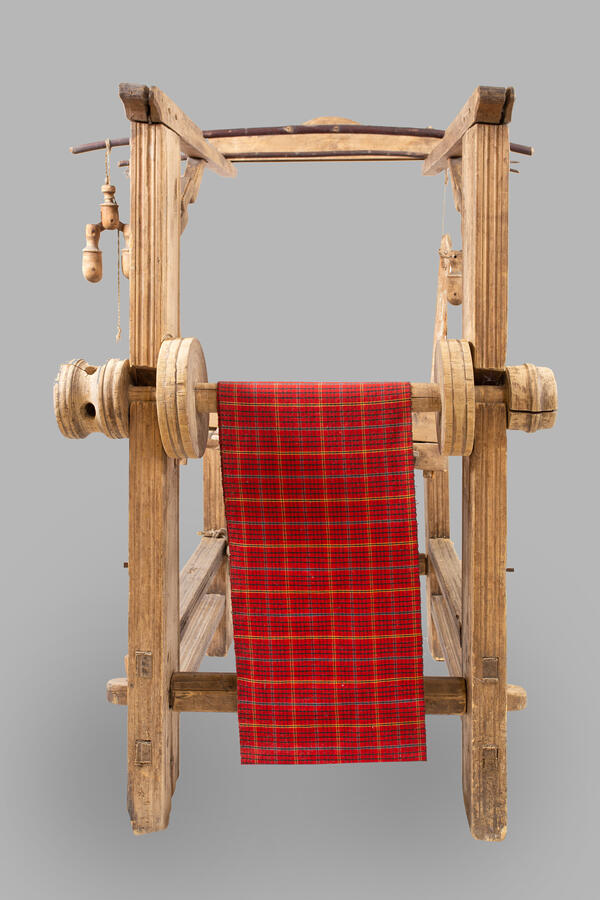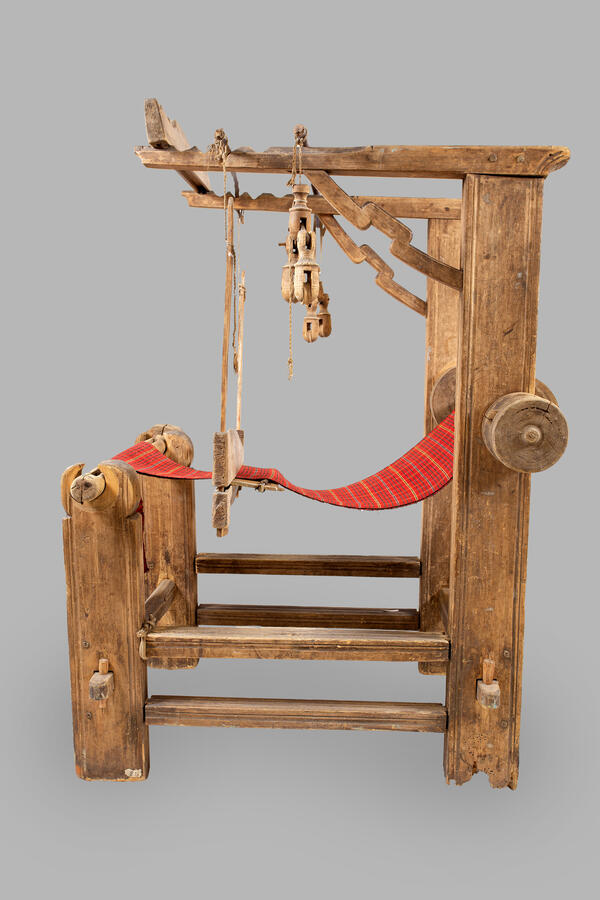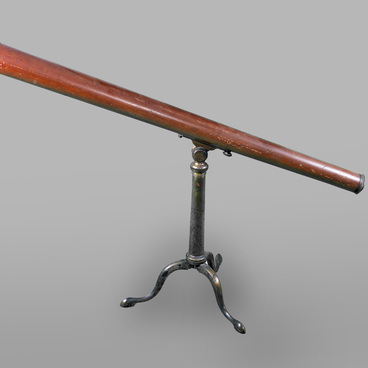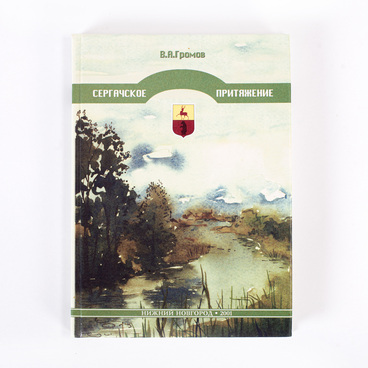The loom is the main device for making cloth and carpets from linen, cotton, silk, and wool. The first looms appeared over 7,000 years ago when people learned how to weave mats from dried grass and needed a tool for it. Weaving is reflected in ancient frescoes, and the image of a spinner who spins the thread of fate is found in many mythologies around the world.
Weaving is a delicate and time-consuming process, and the more skillful the craftswoman is, the faster she weaves. The loom holds the threads vertically, and the weaver pulls the horizontal threads manually so that they go over the even threads and under the odd ones, and vice versa in the opposite direction. The most convenient way to do this is by using a pointed stick called a shuttle that carries a thread. It is vital to ensure that the threads lie evenly and tightly, so when weaving a pattern, each step should be counted.
Looms could be used for making various kinds of fabric, including light linen or coarse, warm wool. There are also different types of weaving: sackcloth, piled, variegated, tapestry, and patterned. Russian villagers made fabrics using a horizontal loom with a complex design. It is based on two wooden parallel frames. The construction also included two beams, a beater with a reed, and heddles with treadles.
The loom came with various additional devices: planks, pickup sticks, and rollers. With their help, craftswomen made complex fabrics, for example, embroidered tablecloths. They were woven using two treadles with pickup sticks and two shuttles with weft thread. In Russian villages, tapestries were called made: locals knew how to weave them but were primarily focused on the main household items, such as sheets, tablecloths, towels, bedspreads, and clothes.
Every Russian household had a loom. Girls learned weaving from early childhood and were supposed to develop good skills before getting married. Weaving was mainly done between Great Lent and the beginning of the planting season. From November to March, the women were usually engaged in spinning to make threads for the weaving season.
Weaving is a delicate and time-consuming process, and the more skillful the craftswoman is, the faster she weaves. The loom holds the threads vertically, and the weaver pulls the horizontal threads manually so that they go over the even threads and under the odd ones, and vice versa in the opposite direction. The most convenient way to do this is by using a pointed stick called a shuttle that carries a thread. It is vital to ensure that the threads lie evenly and tightly, so when weaving a pattern, each step should be counted.
Looms could be used for making various kinds of fabric, including light linen or coarse, warm wool. There are also different types of weaving: sackcloth, piled, variegated, tapestry, and patterned. Russian villagers made fabrics using a horizontal loom with a complex design. It is based on two wooden parallel frames. The construction also included two beams, a beater with a reed, and heddles with treadles.
The loom came with various additional devices: planks, pickup sticks, and rollers. With their help, craftswomen made complex fabrics, for example, embroidered tablecloths. They were woven using two treadles with pickup sticks and two shuttles with weft thread. In Russian villages, tapestries were called made: locals knew how to weave them but were primarily focused on the main household items, such as sheets, tablecloths, towels, bedspreads, and clothes.
Every Russian household had a loom. Girls learned weaving from early childhood and were supposed to develop good skills before getting married. Weaving was mainly done between Great Lent and the beginning of the planting season. From November to March, the women were usually engaged in spinning to make threads for the weaving season.
